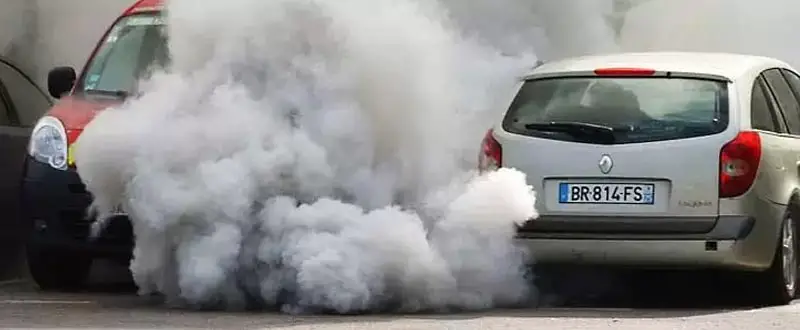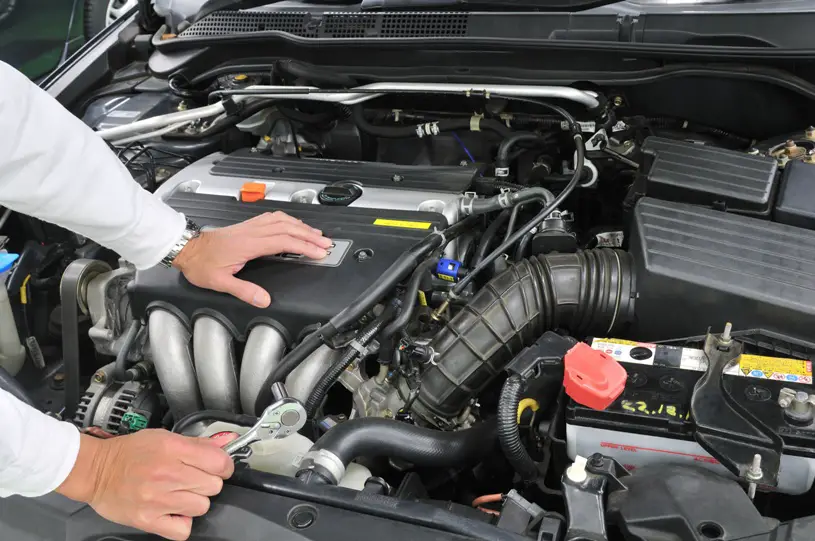Engine misfires occur when one or more cylinders fail to fire properly during the combustion cycle. This can create a variety of drivability issues and also lead to extensive mechanical damage if left unaddressed. What damage can a misfire cause? Understanding what types of damage misfires can cause will help you to diagnose and repair the underlying issue promptly. This guide looks at how engine misfires impact engine operation and the resultant wear and failure that can occur.
What Damage Can A Misfire Cause?

Here are the common noticeable damages misfire can cause to your vehicle and corrective guidelines, that can help resolve damages.
1. Increased Fuel Consumption
One of the first symptoms of an engine misfire may simply be decreased fuel economy. Here’s why:
- Incomplete combustion: The air-fuel mixture burns incompletely or not at all in the affected cylinder. This wastes fuel.
- Rich mixture: The engine computer may compensate by adding more fuel to the good cylinders. This further reduces mileage.
- Increased idling: Misfires typically occur more at idle. More time idling means more wasted fuel.
- Detonation: Premature combustion can cause detonation in good cylinders which further hinders efficiency.
- Check engine light: Illuminated engine lights also impact fuel economy negatively.
The harder an engine must work to compensate for misfiring cylinders, the more fuel it consumes. Addressing the root cause restores proper combustion and improves mileage.
2. Engine Overheating
Misfiring cylinders produce less power and engine output. This forces the engine to work harder to maintain speed and performance. The extra effort generates additional heat and strain.
- Lean conditions: Good cylinders run hotter to pick up the slack, risking overheating damage.
- Lugging: The engine strains against inertia at lower speeds, creating heat.
- Premature detonation: Early ignition creates extremely high temperatures inside cylinders.
- Cooling system strain: Overheating taxes the cooling system, leading to failures.
- Oil breakdown: Excessive heat accelerates thermal breakdown of engine oil into sludge.
Engine overheating expedites the demise of gaskets, seals, hoses, and other temperature-sensitive components.
3. Catalytic Converter Damage

Misfiring allows unburned fuel and gases to reach the exhaust system and overheat the catalytic converter:
- Overheating – Raw fuel and oxygen create an exothermic reaction generating intense converter heat.
- Melting – Sustained overheating and extremely high temperatures melt and fuse the internal catalyst structure.
- Clogging – Carbon deposits choke airflow through the converter as temperatures repeatedly spike and plunge.
- Oxygen sensor damage – Excess oxygen also overheats oxygen sensors and ruins the ability to monitor air-fuel ratios.
- Check engine lights – Any harmful emissions from a damaged converter or sensor activate the check engine light.
Replacing a melted or clogged catalytic converter and oxygen sensors gets extremely costly. Avoiding misfires is key to preserving the emissions system.
4. Detonation (Engine Knock)

Detonation or engine knock occurs when increasing cylinder pressures and temperatures cause premature ignition of the air-fuel mixture:
- Loud knocking – The abnormal combustion creates a loud, repetitive knocking or pinging sound.
- Component stress – The accompanying violent cylinder pressure spikes apply tremendous force to internal engine components.
- Piston/cylinder damage – The uncontrolled ignition can damage piston crowns, cylinder walls and heads over time.
- Rod/crank stress – The extreme pressures placed on connecting rods risks bending them or damaging rod bearings.
- Preignition – Runaway preignition over multiple cycles can destroy an engine through melted pistons, holes in blocks and thrown rods.
The damaging forces involved in chronic detonation accelerate wear to bearings, bushings and other critical engine parts.
5. Erratic Engine Operation

When one or more cylinders misfire, erratic drivability issues arise:
- Loss of power – Reduced cylinder output cuts engine power for acceleration and hauling loads.
- Surging – Speed surges up and down as misfiring cylinders intermittently contribute power.
- Stalling – An extreme misfire can cause complete engine stall, especially at idle.
- Hard starting – Very rough idling and fluctuating RPMs make the engine hard to start or keep running.
- Vibrations – The imbalance of some cylinders not firing causes noticeable vibrations through the chassis.
- Backfiring – Unburnt fuel ignites in the exhaust system, causing loud backfiring.
Drivability complaints should be investigated promptly as they suggest existing or impending engine damage.
6. Premature Wear
By creating extreme stress, heat and imbalance, engine misfires accelerate wear to critical engine components:
- Piston rings – Loss of sealing allows higher blowby into the crankcase. This pressurizes and damages the oil system.
- Valves and seats – Distorted sealing from heat and deposits lead to compression loss and blowby.
- Bearings – Overloading bearings brings shorter lifespan and imminent failure.
- Bushings – High temperatures degrade soft bushings which then fail to dampen vibrations.
- Gaskets – Overheating, distortion and blowby compromise head, valve cover and other gaskets.
The excessive pressures and heat inside a misfiring engine create ideal conditions for accelerated wear and fatigue failures.
7. Engine Oil Contamination

Oil contamination occurs both from unburnt fuel leaking past worn rings into the crankcase and increased blow by of combustion gases:
- Fuel dilution – Gasoline in the oil degrades lubrication quality and can form varnish or sludge.
- Acid formation – Blowby gases interact with moisture to form sulfuric and other corrosive acids.
- Additive breakdown – Contaminants deplete critical friction, anti-wear and cleaning additives.
- Viscosity loss – Shearing from combustion contamination thins out the oil.
- Foaming – Blowby gases whip trapped oil into bubbly foam that does not lubricate effectively.
Contaminated engine oil loses its protective qualities rapidly, allowing even faster component wear. Change oil more frequently when misfires exist.
Wrapping Up
Ignoring ongoing misfire conditions allows damage to spread across an engine over time. Listen for any new knocking, pinging or rumbling noises and troubleshoot drivability issues immediately to avoid costly repairs down the road. With proper care and maintenance, your engine can give you many miles of dependable service.

